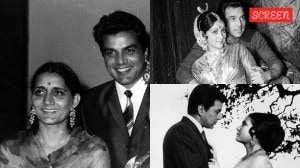Conversion could have been motive behind Staines’ murder, says missionary
BHUBANESWAR, MAY 7: John Mathai, a missionary of the Indian Evangelical Mission (IEM) on Thursday told the Justice D P Wadhwa Commission ...

BHUBANESWAR, MAY 7: John Mathai, a missionary of the Indian Evangelical Mission (IEM) on Thursday told the Justice D P Wadhwa Commission that conversion could have been the motive behind the murder of Australian missionary Graham Stewart Staines and his two minor sons at Manoharpur.
Deposing before the commission, Mathai, a preacher in Thakurmunda area of Mayurbhanj district said Staines was probably murdered to stop the spread of Christianity in Mayurbhanj and Keonjhar.
He admitted before the commission that the Christian population was increasing due to conversion in both the tribal-dominated districts. Unable to give the figure of the Christian population in Mayurbhanj district, Mathai said the local churches kept records.
Asked whether educated and well-off persons in Mayurbhanj and Keonjhar had embraced Christianity, he said, “I have no idea of any educated and well-off persons converting to Christianity in towns and cities”, adding only four or five educated tribals were converted.
Mathai said he could not say whether the number of churches had increased in the two districts after Staines came to Baripada.
He also said there was opposition to conversion in the two districts. Narrating an incident at Baliposhi where a jungle camp was orgainsed by IEM in February 1998, Mathai said a group of youngsters had threatened to disrupt the camp. One of the youths was wearing a Rashtriya Swayamsevak Sangh T-shirt. They had to close the camp for a day following the threat.
He said the local police, who were informed about the threat, expressed their inability to provide security to the camp in view of the general election.
Recalling another incident, Mathai said there was tension between Christians and non-Christians at Basantpur village in Mayurbhanj district in 1992. He said a group of villagers armed with lathis prevented him, his wife and one Pradip Das from going to the church to offer prayer.
Mathai said he did not lodge a complaint as he felt that it would only irritate the people and aggravate the situation.
Asked if he had attended the jungle camp at Manoharpur, Mathai said the IEM was concentrated in areas inhabited by the Ho tribes, while Staines, a member of the Evangelical Missionary Society of Mayurbhanj (EMSM), worked in Santhal-dominated areas.
Mathai said EMSM received funds from Australia, where the society is registered. The money sent from Australia came to a bank at Calcutta. Besides, Staines’ friends also sent their contributions to the society, which runs a Leprosy Home at Baripada
Dr N K Mohanty, professor in the Forensic Medicine and Toxicology Department, Sriram Chandra Bhanja Medical College, Cuttack, said on Thursday that there was no firearm and bullet injuries on the charred bodies of the Australian missionary Graham Stewart Staines and his two sons, who were burnt to death at Manoharpur on the night of January 22.
Dr Mohanty had conducted the post-mortem on the three bodies along with Dr J K Balabantray of the medical college on January 24. There were reports in a section of the press that a youth from Boring village had reportedly revealed before the crime branch of the police investigating the triple murder that Staines and his sons were shot dead before the station wagon in which they were sleeping was set afire.
Replying to questions from the commission, Dr Mohanty said he did not find any pugilistic posture’ in the bodies, which were completely burnt. However, the bodies indicated that the three persons may have been burnt for four to six hours. He added he did not get the odour of any inflammable substance from the bodies.
Circle inspector, Anandpur sadar, Sushil Kumar Mohanty also deposed before the commission.



- 01
- 02
- 03
- 04
- 05




























